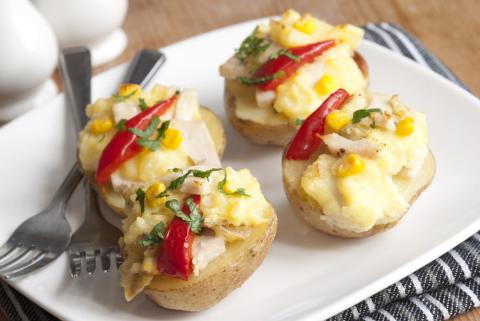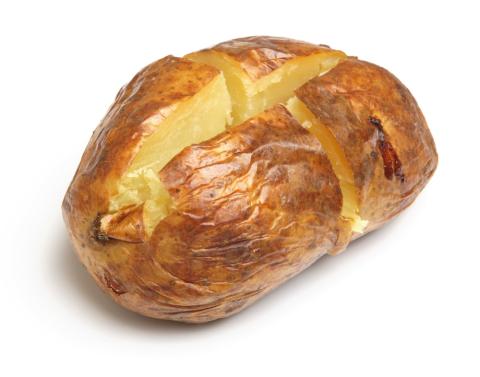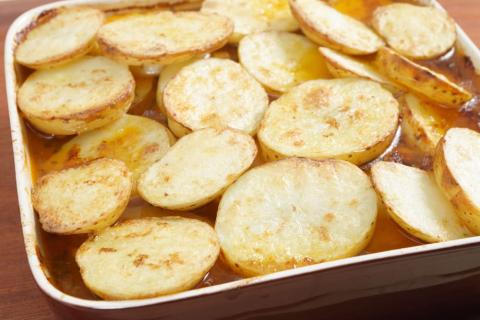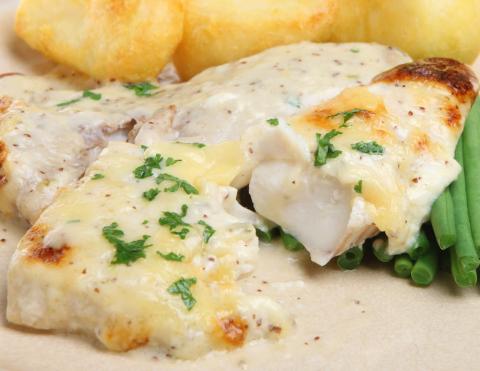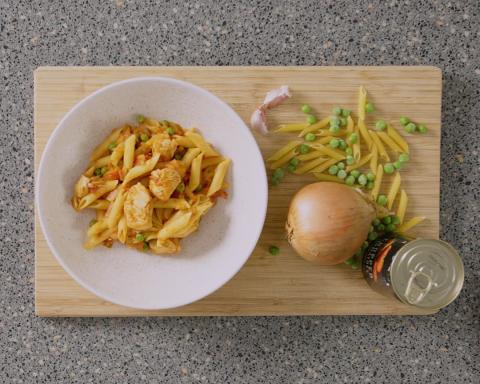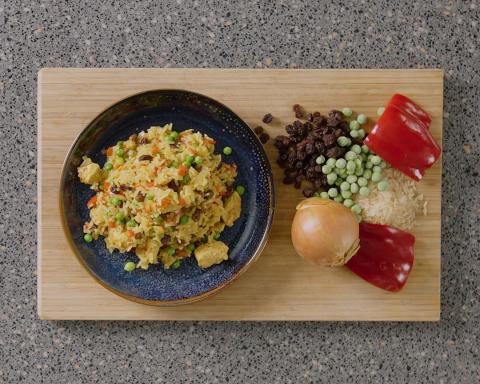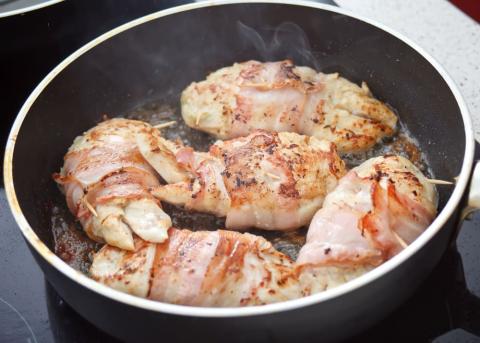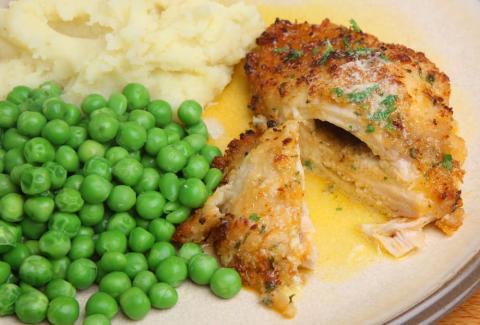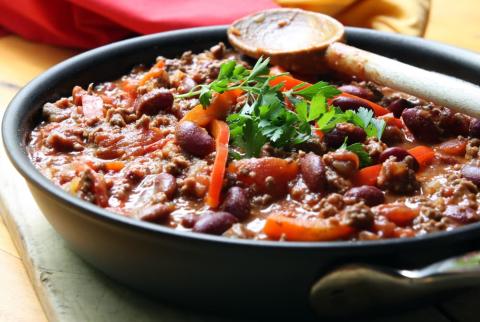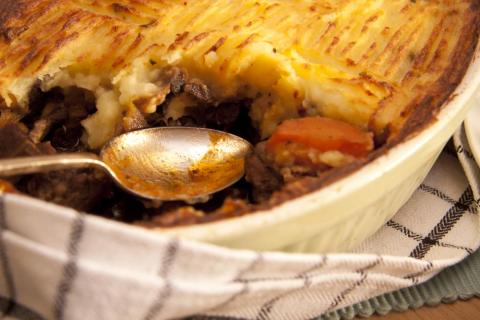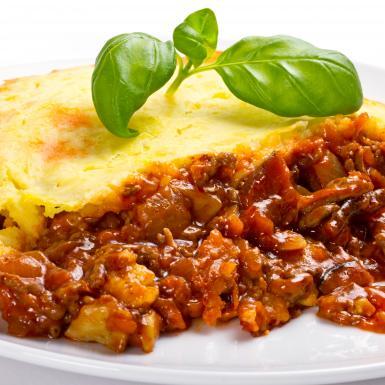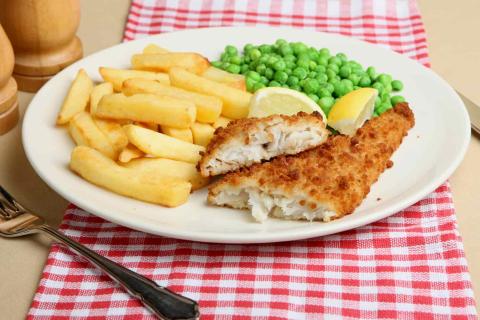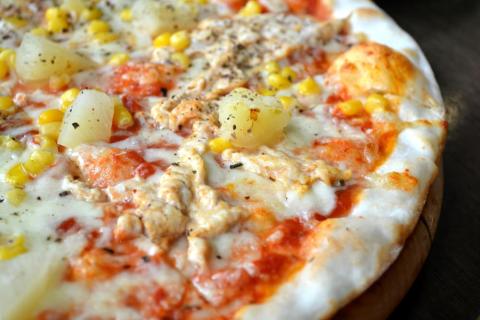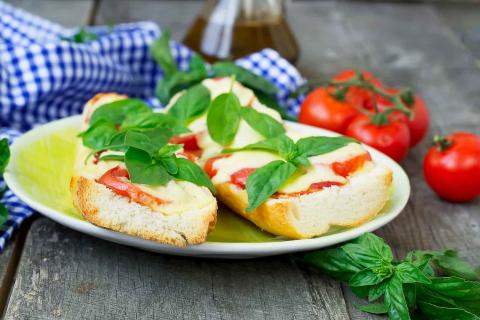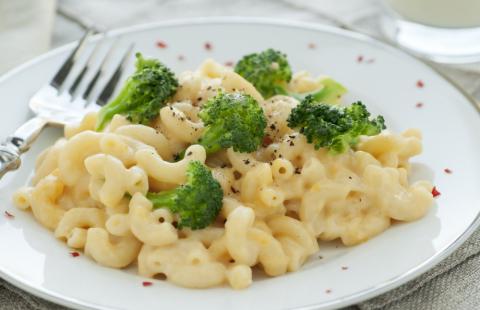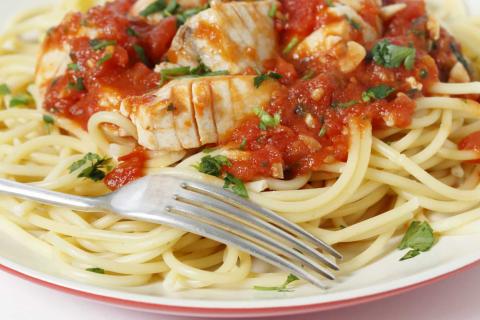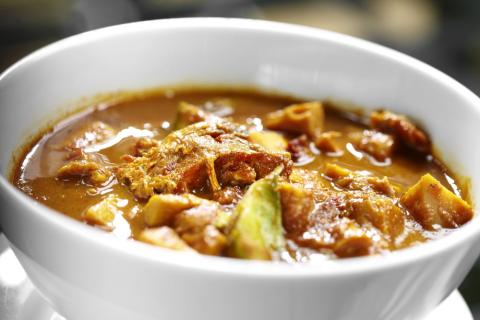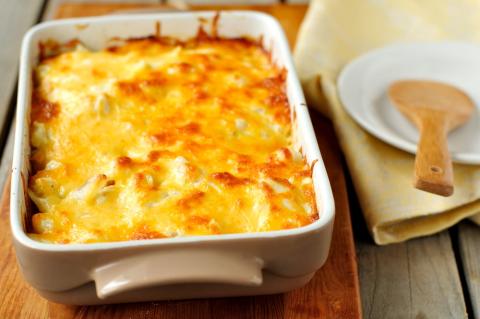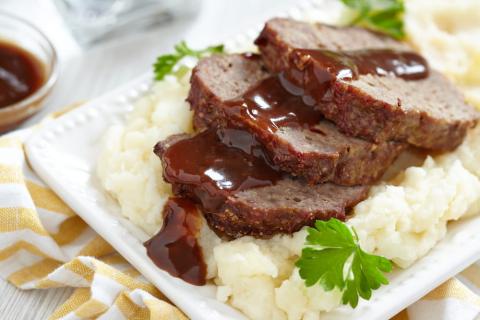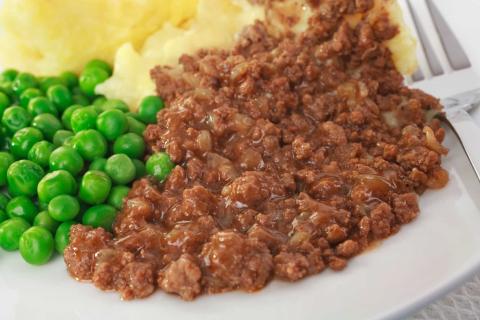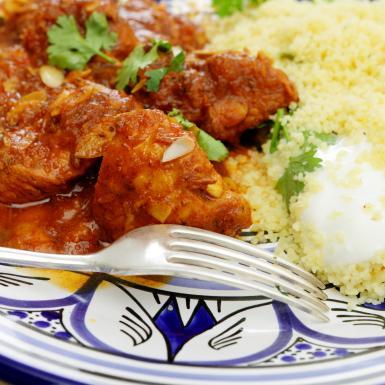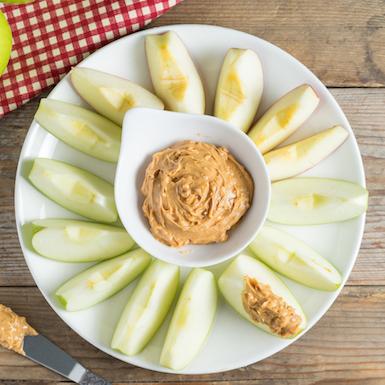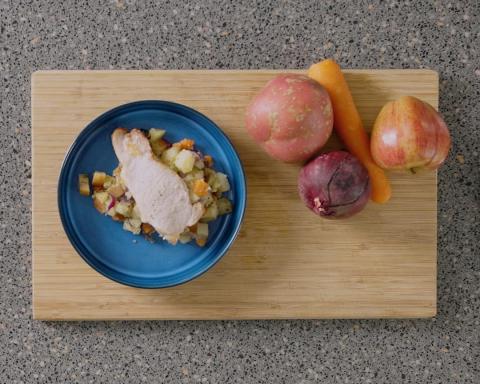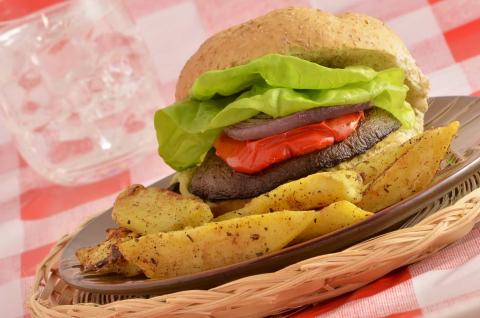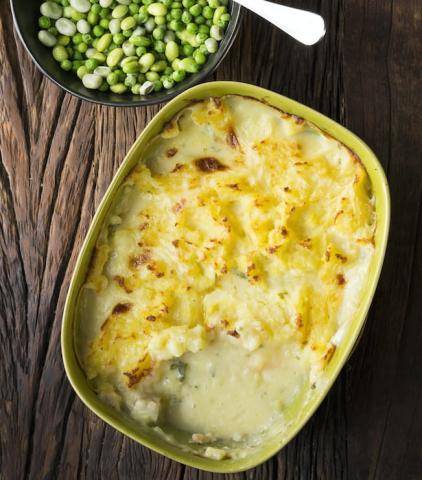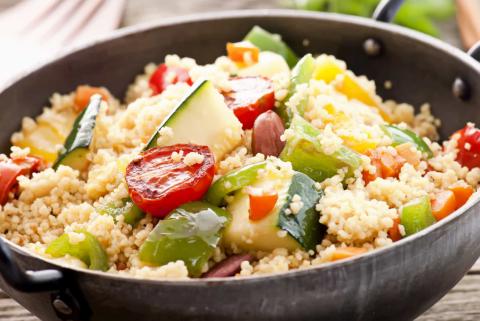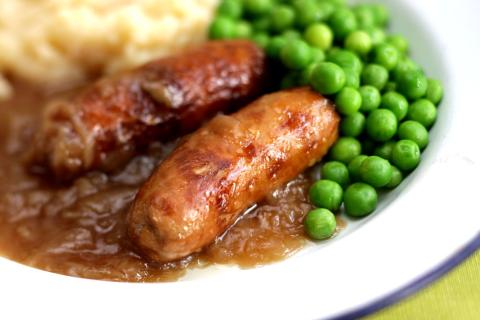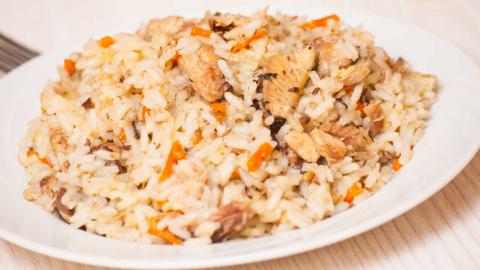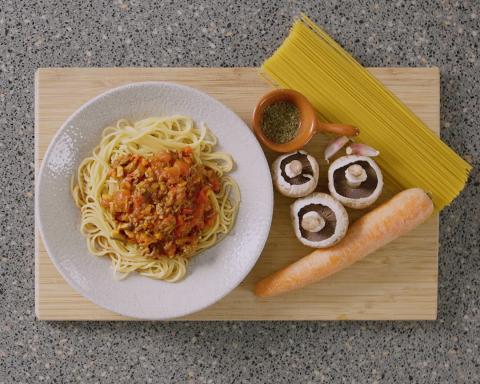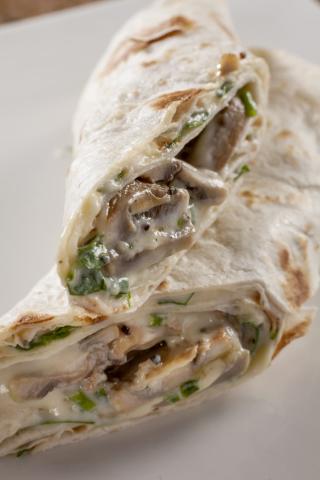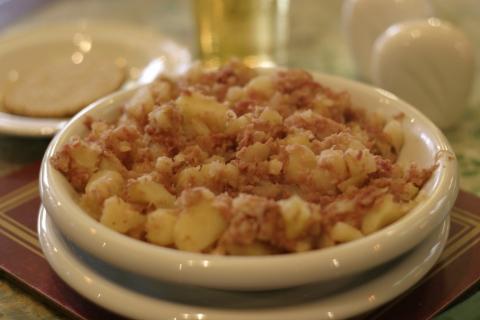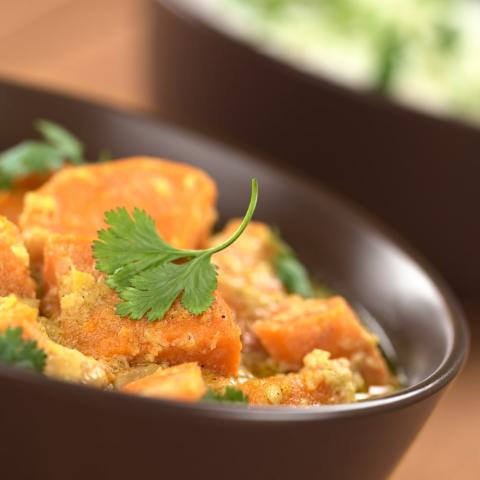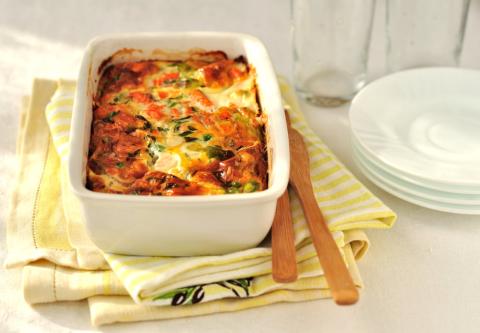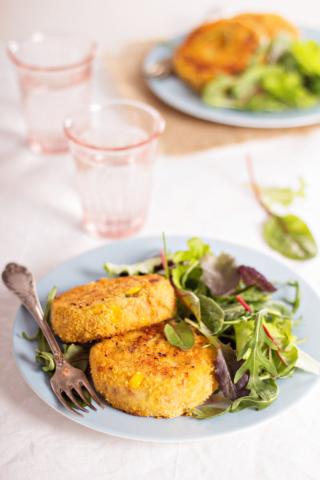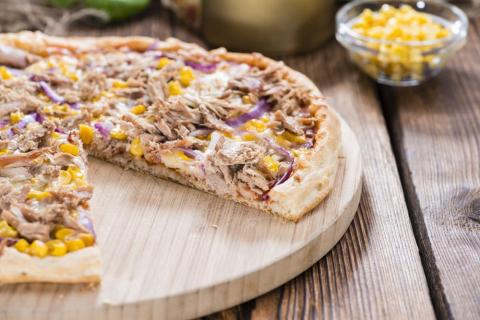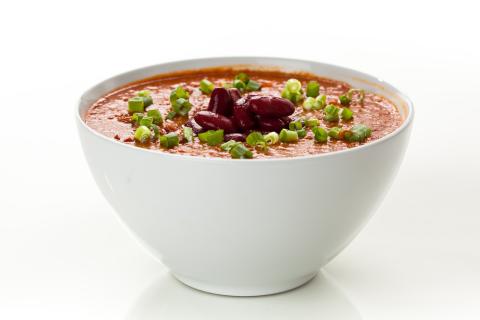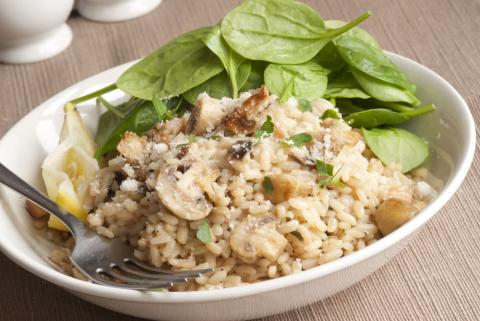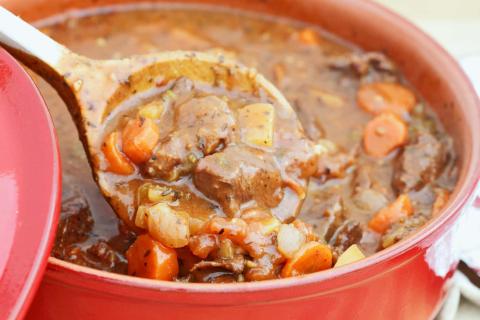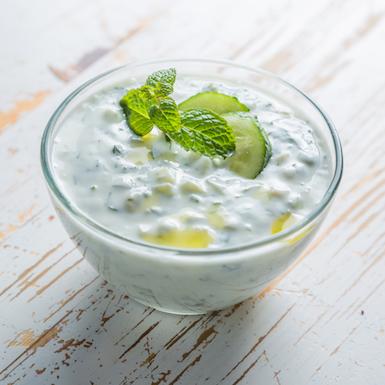- 2 Small Sized (120g) Onions
- 1 Medium Sized (160g) Red Pepper
- 5 Large Sized (100g) Mushrooms
- 2 (6g) Garlic Cloves or 1 Teaspoon (5g) Garlic Puree
- 1 Tablespoons (10g) Vegetable Oil
- ½ Pack (200g) Lean Minced Beef
- 2 Tins (800g) Chopped or Plum Tomatoes
- 2 Teaspoons (2g) Dried Mixed Herbs
- 1 Medium Sized (80g) Carrot
- ½ Pack (300g) Spaghetti
- 1 Pinch Ground Black Pepper
Ingredients
Allergy Disclaimer
Always check the label of each ingredient for allergy warnings.
Method
- Peel and chop the onions; wash, peel and dice the carrot; wipe dirt off the mushrooms and slice; wash, deseed and dice peppers and finely chop or crush the garlic.
- Heat the oil in a pan then slowly brown the onion over a gentle heat.
- Add the mince, stirring to stop it from sticking.
- Add the remaining ingredients, apart from the spaghetti, bring the sauce to the boil, cover and then lower the heat and simmer gently for 15-20 minutes, giving it a stir now and again. If using plum tomatoes, chop them up using a spoon when in the pan.
- While that’s cooking bring a large pan of water to the boil, add the spaghetti and follow the instructions on the packet for cooking.
- Add pepper to sauce to taste. Drain the spaghetti and serve with sauce.
Time Saver Tips
To save time at meal time, you can prepare the sauce in advance and heat through when needed. You can also use garlic puree, to save chopping that garlic. Why not try making the sauce in bulk? That way, you can freeze some for another time.
Cost Saver Tips
Keep your eyes peeled for great offers on mince – it doesn’t have to be beef, any minced meat is tasty. You could also try veggie mince. Plum tomatoes can be a cheaper alternative to chopped tomatoes. Don’t forget, you can save leftover spaghetti by mixing it with a little oil, covering it, and popping it in the fridge for up to a day.
Tips for Kids
Why not try wholemeal spaghetti to give your wee one a fibre boost? If you do, bear in mind it may take 2-4 minutes longer to cook. And you could try serving it with some bread. Use their favourite pasta shapes and remember to chop vegetables into bite-size pieces for little mouths. You could grate the carrot instead of dicing it if they're not carrot fans. You could even add other veggies like celery or courgette to help towards their five a day.
Nutritional Information
Based on a single serving of 457g (% of an adult's reference intake)
Energy
377 kcals ( 19 %)
1,436 kJ ( 19 %)
Fat
1.4 g ( 7 %)
Saturates
63.2 g ( %)
Sugar
13.4 g ( 15 %)
Salt
0.2 g ( 3 %)
Detailed nutritional information
| Per 100g | Per 457g serving | |
|---|---|---|
| Energy Kcals | 82 | 377 |
| Energy Kj | 314 | 1,436 |
| Protein | 4.6 g | 6.7 g |
| Total Fat | g | g |
| Saturated Fat | 0.3 g | 1.4 g |
| Carbohydrates | 13.8 g | 63.2 g |
| Total Sugars | 2.9 g | 13.4 g |
| NSP Fibre | 1.5 g | 6.7 g |
| Sodium | 15 mg | 66 mg |
| Salt | 0 g | 0.2 g |
Find out about nutritional labelling
Nutrition labels on the front of packaging
- Most of the big supermarkets and many food manufacturers display nutritional information on the front of pre-packed food.
- Front of pack nutrition labels provide information on the number of grams of fat, saturated fat, sugars and salt and the amount of energy (in kJ and kcal) in a serving or portion of a recipe.
- The labels also include information about reference intakes (expressed as a percentage) which are guidelines about the approximate amount of particular nutrients and energy required for a healthy diet.
- The colour coding tells you at a glance if the food has high (red), medium (amber) or low (green) amounts of fat, saturated fat, sugars and salt.
- The more greens on the label, the healthier the choice
- Amber means neither high nor low, so you can eat foods with all or mostly ambers on the label most of the time.
- Reds on the label means the food is high in that nutrient and these are the foods we should cut down on. Try to eat these foods less often and in small amounts.
Food shopping tips
If you’re trying to decide which product to choose, check to see if there's a nutrition label on the front of the pack. This will help you to quickly assess how your choices stack up. You will often find a mixture of red, amber and green colour coding for the nutrients. So when you're choosing between similar products, try to go for more greens and ambers and fewer reds if you want to make a healthier choice.
 Activities & Play
Activities & Play Behaviour
Behaviour Childcare
Childcare Development & Growing Up
Development & Growing Up Family, Friends & Relationships
Family, Friends & Relationships Feeding Your Baby
Feeding Your Baby Food & Eating
Food & Eating Health & Safety
Health & Safety Mental Health & Wellbeing
Mental Health & Wellbeing Money & Work
Money & Work Online Behaviour & Safety
Online Behaviour & Safety Pregnancy & First Days
Pregnancy & First Days School & Education
School & Education Sleep
Sleep


